 “Today, the 100-year-old Dravidian movement is struggling to remain relevant. It has become socially, culturally, historically and spiritually a failed movement. Like all failed movements it lives in desperation. And like all desperate entities it seeks violence and hatred to justify its existence.” – S. Aravindan Neelakandan
“Today, the 100-year-old Dravidian movement is struggling to remain relevant. It has become socially, culturally, historically and spiritually a failed movement. Like all failed movements it lives in desperation. And like all desperate entities it seeks violence and hatred to justify its existence.” – S. Aravindan Neelakandan
 Our enemies, the Brahmins, should tremble in fear.” When DMK supremo M. Karunanidhi made this public statement early this year as part of the centenary of celebrations of the Dravidian movement, Bishop Robert Caldwell of the Society for the Propagation of the Gospel (SPG) would have had rolled over in ecstasy in his grave. After all, it was Bishop Caldwell who gave the fundamentals of the racial framework for the interpretation of south Indian history.
Our enemies, the Brahmins, should tremble in fear.” When DMK supremo M. Karunanidhi made this public statement early this year as part of the centenary of celebrations of the Dravidian movement, Bishop Robert Caldwell of the Society for the Propagation of the Gospel (SPG) would have had rolled over in ecstasy in his grave. After all, it was Bishop Caldwell who gave the fundamentals of the racial framework for the interpretation of south Indian history.
Like the term ‘Arya’, the term ‘Dravida’ also has a long history. Traditional Indian psyche with its diverse streams, including the Vedic, Buddhist and Jain, never interpreted these terms in racial terms. While the term ‘Arya’ relates to a person of culture, ‘Dravida’ refers to a specific geographical region well within the cultural matrix of India. However, after Max Muller read racial meaning in the term ‘Arya’ and Europeanised it as ‘Aryan’, colonial-missionary binary constructs of Aryan-aboriginal started fast percolating into the psyche of educated classes of Indians — both Brahmins and non-Brahmins. Bishop Caldwell, whom DMK supremo praised limitless, added a conspiracy theory to this racial framework. No, Aryans did not conquer the Dravidians, he said, but they sent their stooges the cunning Brahmins who through their religion enslaved the Dravidian kings. According to Caldwell, Tamil kings were gullible enough to accept the title ‘Shudra’ when Brahmins told them that it was a title of honour. ‘Cunning Aryans’ also invented what is now known as Hinduism as a means to enslave Dravidians!
 Today, the Aryan-Dravidian binary stands rejected by archaeology and dismissed repeatedly by genetic studies. However, the apologists of the Dravidian movement claim that it was nevertheless a tool for social emancipation and had to be understood in that context. How much truth is contained in such a claim?
Today, the Aryan-Dravidian binary stands rejected by archaeology and dismissed repeatedly by genetic studies. However, the apologists of the Dravidian movement claim that it was nevertheless a tool for social emancipation and had to be understood in that context. How much truth is contained in such a claim?
The racial theory enunciated by Caldwell had three components: The Aryans, the Dravidians and the Dalits. The Dalits were of little consequence in the narrative constructed by Caldwell. His main aim was projecting the Aryan-Dravidian divide. And this became an integral part of Dravidian political ideology. Herein lies the main spiritual weakness of the Dravidian movement: It could never speak whole-heartedly for the Dalit rights. Throughout the history of the Dravidian movement one sees this deficiency. Rettaimalai Srinivasan, one of the pioneers of the Dalit movement in Tamil Nadu, which was then part of the Madras presidency, though then he had no reason to question the Aryan-Dravidian theory, realised that even if one accepts the binary, the so-called Brahminical and non-Brahminical religious traditions were organically linked. In fact, he along with Baba Saheb Ambedkar at the Round Table Conference in London had petitioned the British to label the depressed classes as “non-conformist Hindus or reformist Hindus or protestant Hindus”.
 Another great Dalit leader of Tamil Nadu was M.C. Rajah. He parted ways with the Justice Party, which was the political expression of non-Brahmin politics. He, too, was appreciative of the reform agenda then taken up by the Hindu Mahasabha. Ayyankali, the first Dalit freedom fighter of Kerala, who successfully won the educational rights of Dalits in Kerala through a bitter battle, had no use for the Aryan-Dravidian racial construct. Incidentally, he had his initial inspirations from monks who had their roots in Arya Samaj. Nor did Sri Narayana Guru ever use the racial framework of Caldwell for his social emancipation fight. Rather, he used Advaita Vedanta for the liberation of the oppressed.
Another great Dalit leader of Tamil Nadu was M.C. Rajah. He parted ways with the Justice Party, which was the political expression of non-Brahmin politics. He, too, was appreciative of the reform agenda then taken up by the Hindu Mahasabha. Ayyankali, the first Dalit freedom fighter of Kerala, who successfully won the educational rights of Dalits in Kerala through a bitter battle, had no use for the Aryan-Dravidian racial construct. Incidentally, he had his initial inspirations from monks who had their roots in Arya Samaj. Nor did Sri Narayana Guru ever use the racial framework of Caldwell for his social emancipation fight. Rather, he used Advaita Vedanta for the liberation of the oppressed.
The decisive blow against the Dravidian ideology as a tool for social emancipation was dealt by none other than Ambedkar. Bodhisattva of our times, Ambedkar rejected the racial interpretation of Indian social reality decisively. Discarding the Western theory that the so-called untouchables and Brahmins belonged to different races, Ambedkar stated that if anthropometry was to be considered a science then based on exhaustive data, Brahmin and the Dalit did not belong to separate races but one. “The Brahmin and the untouchable belong to the same race,” he said. This was a basic fundamental truth which the south Indian non-Brahmin movement, which labelled itself ‘rationalist’, never grasped.
 E.V. Ramasami (EVR), the primal patriarch of Dravidian racism, who was also donning the cap of “the sun of rationalism” never understood the fallacy of his demand for Dravidstan. In July 1947, he attacked Ambedkar of betrayal and as having gone to side of “dry North Indian philosophy” and standing for a “United India”.
E.V. Ramasami (EVR), the primal patriarch of Dravidian racism, who was also donning the cap of “the sun of rationalism” never understood the fallacy of his demand for Dravidstan. In July 1947, he attacked Ambedkar of betrayal and as having gone to side of “dry North Indian philosophy” and standing for a “United India”.
The Dravidian race theory also contained in it a denial of Dalits as part of the same race. This contempt for Dalits as part of the Dravidian movement has often manifested itself in abusive and violent forms. EVR himself often spoke in venomous contempt against the Dalits. Dalit leaders of his time protested vehemently against his disparaging remarks attributing the rise in the price of cloth to Dalit women wearing jacket. It was only after decades, that too during an election period, that EVR came up with a lame explanation for his alleged statement which did not cut much ice across the Dalit leaders.
The unkindest cut of all came in the form of a Dalit massacre in 1969. In a village in Tamil Nadu (the notorious Keezhvenmani massacre) non-Brahmin upper caste landlords torched alive landless Dalit workers, who were non-violently agitating for an increase in the wages. EVR came up with a condemnation of the incident. He started with the condemnation of the concept of Satyagraha, which according to him had made common people rebels. Then he ended up condemning those who ‘instigated’ the Dalits to fight for higher wages. There was not a single word of condemnation against the non-Brahmin landlords.
 Ambedkar was bitter about Hindu society for its suicidal maintenance of the oppressive caste system. But he never let that bitterness become hatred. He never compromised on the safety and integrity of the nation. He always saw him as part of the great process of renaissance and social emancipation movement that started with the wisdom of the Upanishads and manifested in the compassion of Buddha. He and his movement were staunchly rooted in the principles of democracy and Ambedkar traced the spiritual basis of Indian democracy to the ‘Mahavakyas’ of the Upanishads. One finds such deeper and holistic understanding of Indian social history conspicuous by its absence in the Dravidian movement.
Ambedkar was bitter about Hindu society for its suicidal maintenance of the oppressive caste system. But he never let that bitterness become hatred. He never compromised on the safety and integrity of the nation. He always saw him as part of the great process of renaissance and social emancipation movement that started with the wisdom of the Upanishads and manifested in the compassion of Buddha. He and his movement were staunchly rooted in the principles of democracy and Ambedkar traced the spiritual basis of Indian democracy to the ‘Mahavakyas’ of the Upanishads. One finds such deeper and holistic understanding of Indian social history conspicuous by its absence in the Dravidian movement.
On the contrary, the Dravidian movement rooted itself in the false racial doctrine of Aryan-Dravidian theory. It was based on a racial hatred for Brahmins as the other. Though in later days, democratic compulsions forced C.N. Annadurai to overcome this hatred, he too was not above lamenting that the social reality of Tamil society prevented him from implementing Hitler’s methods in eliminating the Brahmins. However, the people of Tamil Nadu were cautious in the sense that they repeatedly rejected the hardcore pseudo-rationalist, racist DMK and preferred the ADMK which during the charismatic M.G. Ramachandran’s time was more inclusive of the Dalits, more sensitive to Hindu religious sentiments and had a better democratic and humanitarian face.
 Today, the 100-year-old Dravidian movement is struggling to remain relevant. It has become socially, culturally, historically and spiritually a failed movement. Like all failed movements it lives in desperation. And like all desperate entities it seeks violence and hatred to justify its existence. The term ‘social justice’ has become synonymous in the Dravidian movement for a racial hatred for Brahmins and a passionate hatred against Indic spiritual traditions. Thankfully, people have realised its ideological bankruptcy. – The Pioneer, New Delhi, 18 August 2012
Today, the 100-year-old Dravidian movement is struggling to remain relevant. It has become socially, culturally, historically and spiritually a failed movement. Like all failed movements it lives in desperation. And like all desperate entities it seeks violence and hatred to justify its existence. The term ‘social justice’ has become synonymous in the Dravidian movement for a racial hatred for Brahmins and a passionate hatred against Indic spiritual traditions. Thankfully, people have realised its ideological bankruptcy. – The Pioneer, New Delhi, 18 August 2012
» With inputs from M. Venakatesan, author and an emerging Dalit historian. S. Aravindan Neelakandan is the co-author of a path-breaking book on Dravidian and Dalit faultlines, Breaking India: Western Interventions in Dravidian and Dalit Faultlines.
Filed under: india | Tagged: arya, aryan, aryan invasion theory, brahmins, british india, caste, caste system, DMK, dravidian, dravidian movement, dravidian race theory, dravidistan, hindu, human rights, identity crisis, india, indian politics, politics, psychological warfare, religion, robert caldwell, slavery, society, vedanta |


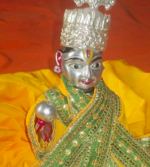





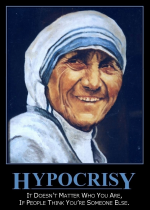
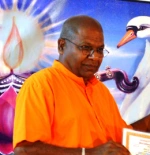

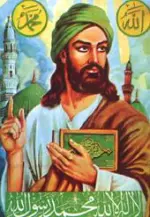
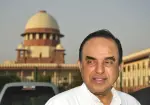
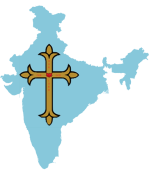

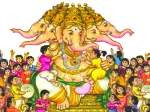



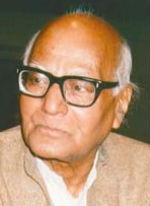

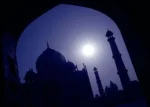




Pls choose a pseudonym and put it in the name field of your comments. This will link all your comments together.
If you don’t do it, we will have to do it for you.
LikeLike
Isn’t Kanimozhi the one who’s married to a Singaporean (or Sri Lankan?) christian missionary? And the same Kanimozhi who was on the catholic priest Fr. Jegath Gaspar Raj’s Tamizh committee for promoting the christianisation-via-inculturation of the sacred Hindu Tiruvachakam, whose proceeds then went to fund the christian outfit LTTE? (vigilonline.com/index.php?option=com_content&task=view&id=921&Itemid=1)
Clearly the daughter’s not just busy robbing the nation in scams, but is a crypto-christian, as she is married to a christian I think (which no Hindu would ever do) and is also personally engaged in evangelical activities including inculturation. Who’d have thought.
That would make Mrs Karunanidhi the only one in Karunanidhi’s family who’s still a type of Hindu. Not for long perhaps: maybe her son-in-law might convert her to christianism tomorrow, seeing as how she couldn’t be bothered prevent her daughter’s marriage or showing here the door. (Or maybe Mrs K worships jesus and mary idols at home already, and is slowly being weaned off Hindu Gods and temples?)
LikeLike
Indeed…indeed..it was no jibe. I saw red at the use of ‘heathen’ !
But nothing surprising that a Hindu is hearkening back to his spiritual heritage. Quite a few Hindus, and prominent ones at that, have stood up too and had their say.
Kannadasan wrote his Arthamulla Hindu Madham in 1972. The book has gone on to become a bestseller (It was his misfortune to have been misled by evangelicals at the fag end of his life. I have commented about this at http://vamanan81.wordpress.com/2012/07/16/a-jesus-christ-made-to-order/
Cho has been forthright in defending the criticisim against Hinduism. His ‘Verukkathakkadhaa Brahmaneeyam’ (Is the so-called ‘Brahminism’ worthy of hatred) calls the bluff of the Dravidian bluster. Jayakanthan, Gnanpeeth Akademi award winner, a former communist, is imbued with the spirituality of the Vedas as his stories show. Of course, in recent times our Radha Rajan has boldly called a spade a spade. I have read Mr. Venkatesan’s book and have profited from it.
LikeLike
Vamananji, I think there is a misunderstanding. No jibe has been made at M. Venkatesan by anyone. On the contrary, the commentator below is praising him for being true to his Hindu religion.
When a term like “heathen” has been used, it is meant ironically not as a term of abuse.
I myself use the term Pagan for Hindus in some contexts. It is a way to turn an originally abusive, demeaning term against the abuser.
Pls read the comment below again.
LikeLike
Vis a Vis the jibe at Mr. Venkatesan. So, anyone who respects Hindu gods is a ‘Heathen’! This is the language of a ‘born-again’ Abrahamite. But when the Egyptian Isis becomes Mary, and Mitra’s birthday is plagiarised for the very birth of the only-begotten son (!), you become a thrice-baptised and many times resurrected holy of holies! Is there a soul so opaque that it yet believes the vanities of the Vatican and the lunacies of an enslaving doctrine. If there is any light in this world, its in the Upanishadic truth reiterated by the Buddha that you are your own light. This is a truth that free us even from the Upanishads and the Buddha! For all we know, Jesus might have propagated the same truth, the gospels being only interested and slanted version of an incipient church. As Aravindan Neelakandan has pointed out through his reference to Narayana Guru, in the Vedantic assertions lie the glory of every human…whether he’s the president of a republic or a sweeper in a slum. The thing is we have to put it into practice rigorously. The only revelation worth following is that man is his own master, no book, no religion, no imperialistic creed should be allowed to enslave him. Humans of the world unite, you have only ur idealogical chains to lose.
LikeLike
Yes, must be the same M. Venkatesan who is a historian.
And thanks for the link. I will try to reproduce Sundaram’s article when I have time and space.
LikeLike
Is the M. Venkatesan mentioned at the credits end of the article the same as the M. Venkatesan who declared his attachment to his Hindu Gods freely and unflinchingly in the following:
‘I could not help viewing Periyar’s uncivilised and barbarous attacks upon MY chosen GODS AND GODDESSES and MY own HINDU FAITH as wanton attacks on MY DEAR and SACRED MOTHER who begot me. My search into the works of Periyar and my extensive reading of all his articles gave a rude cultural shock to me. I was greatly dismayed by the hellish hatred of Periyar towards my faith and towards MY chosen GODS AND GODDESSES’.
web.archive.org/web/20060326080029/http://www.newstodaynet.com/2006sud/06mar/0803ss1.htm
If it is indeed the same person, then he is not merely a historian. He’s an unsubverted Hindu, as is apparent from the highlighted statements above. This last observation matters in the same way that it similarly bears noting that Emperor Julian wasn’t just a learned and good Roman, but an unsubverted Hellene–that is, profoundly attached to his Gods–since the latter aspect was the very root of Julian’s identity. Like the title of the book you link to says–and says it all: “Julian’s Gods”. (Genuine heathens tend to sound alike in this aspect, I have often found.)
Likewise, M. Venkatesan effortlessly speaking on his Divine Parents, the Hindu Gods, is him essentially declaring who he is at his very root or heart: a Hindu attached to his Hindu Gods.
There is no hesitation or confusion–so often displayed by other Hindus today speaking of their “culture”, or their “philosophy” or their “science of Hinduism” devoid of the Gods. In contrast to them, he speaks straightforwardly on the subject of Hindu religion, as one who knows both his Gods and thus himself: what his Gods(=Hindu religion) mean to him.
More famous ‘Hindus’ have never managed to even stutter an ounce of what he said straightforwardly in those few words and with an ease that comes only of sincerity and unsubversion. And in speaking thus of himself, he most ably defended (the Hindu religion of) all the Hindus. And that is another thing which famous Hindu spokespersons never managed.
I hope M. Venkatesan will continue to speak in that original heathen strain throughout wherever matters concern Hindu religion/Gods. It is what Hindus truly need: a Hindu who represents them by not betraying the Gods through excusing these away as notions or a side-show in Hindu religion (as others have done), but is instead loyal to his Hindu Gods and holds them central. Hindus do not get such (solely proper) representation from the many famous [and subverted] ‘Hindu’ spokespersons, who always barter away the Hindu Gods–e.g. as symbolisms or human ‘spiritual’ invention–only because these don’t compute to them, and who thus represent no one but themselves.
Only those who *are* heathens themselves (*by nature* unapologetic about this) can represent heathens. E.g. Julian. And what M. Venkateshan said above about himself–about what the Gods mean to him–is *very* heathen. It is the core of heathenism.
LikeLike
Thanks for this article. Today aryan invasion theory is failing all over India and the hateraed politics will end soon. Dr B R Ambedkar in his book ‘Who was Shudras” clearly mentioned that aryans were native Indians and all Indians are aryas because it is not racial term.
LikeLike
In last September Karunanidhi’s Wife Rajathi Ammal had visited Udupi Sri Krishna Temple and had offered prayers. She had met Swamiji of Shiroor Mutt who was then in-charge of Krishna Temple and had sought his blessings. She had ‘Prasadam’ at the Temple. At that time her daughter Kanimozi was detained in Tihar Jail in connection with 2-G Scam. Surprisingly, in a few days after her visit to Krishna temple, Kanimozi was released on Bail ! l
LikeLike
Thanks, Arvind Neelakandan. You have exposed how ‘rational’ the so-called rationalists were, are . They are pseudos to the core, bereft of any spiritual or moral impetus. How elevating atheists like Christopher Hitchens are, and how pathetic these local pretenders!
LikeLike